Mastering the art of passing in basketball can elevate your game and give you a significant edge over your competition. Whether you’re a seasoned professional or an enthusiastic amateur, understanding the different types of passes can make all the difference on the court.
Passing isn’t just about moving the ball; it’s about strategy, precision, and outsmarting your opponents.
From the fundamental chest pass to the flashy behind-the-back pass, each technique serves a unique purpose. A well-executed pass can bypass defenders, set up scoring opportunities, and keep the game flowing smoothly.
By diversifying your passing skills, you’ll not only enhance your own performance but also contribute to a more cohesive and effective team dynamic. Ready to take your game to the next level? Let’s dive into the various types of basketball passes that can transform your play.
Fundamental Types of Basketball Pass
Understanding the fundamental types of basketball passes can significantly improve your game. Here are the core passes every player should master.
Chest Pass
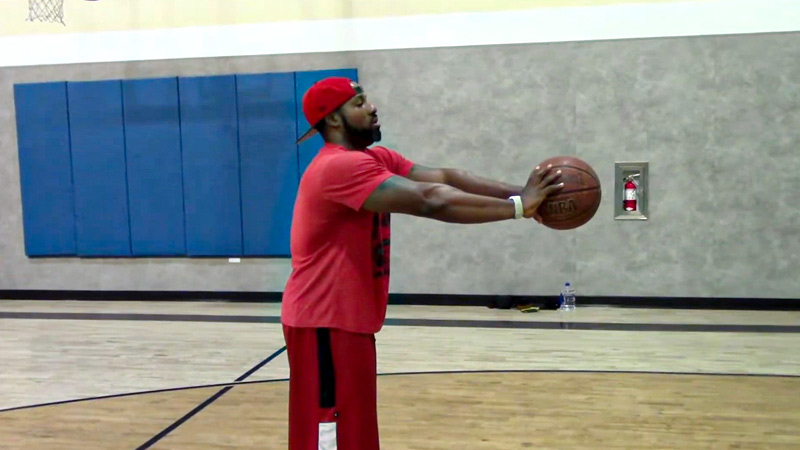
The chest pass is the most utilized pass in basketball. It’s a quick, efficient move where you transfer the ball from one player to another at chest level.
To execute it, hold the ball with both hands at chest height, then push outward with your thumbs and fingers, sending the ball in a straight line to your teammate. This pass is perfect for short, direct transfers and helps maintain possession efficiently.
Bounce Pass
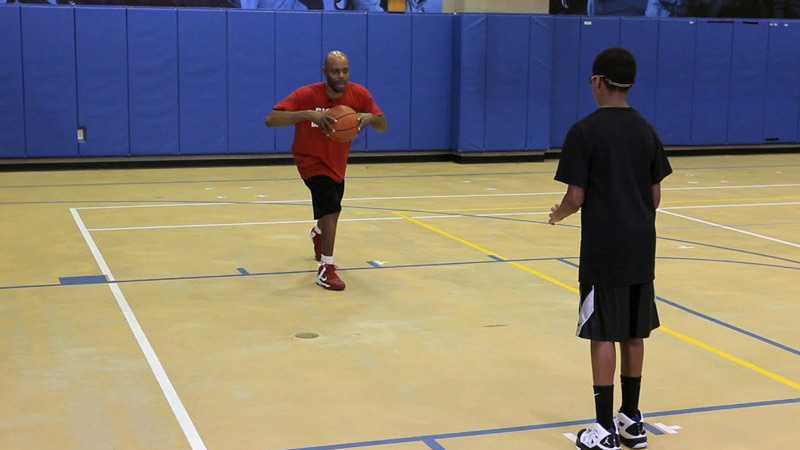
The bounce pass is essential when dealing with closely guarded defenders. This pass involves aiming the ball to hit the floor about two-thirds of the way between you and your teammate.
Hold the ball with both hands at chest level, then push outward, adding a downward angle. The ball should bounce up to your teammate’s hands, often catching defenders off guard.
NBA players sometimes use advanced techniques like putting backspin on the ball, but mastering the basic bounce pass is crucial for beginners.
Overhead Pass
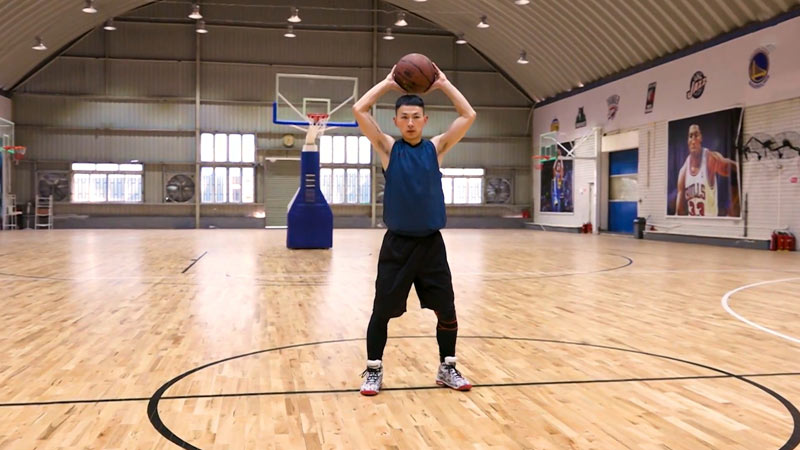
The overhead pass, or baseball pass, is used for long-distance transfers, often in fast-break situations or when a teammate is breaking to the basket after a steal. To perform it, bring the ball above your head with both hands, then throw a hard, direct pass to your teammate.
This pass requires upper body strength and accuracy, making it a valuable skill when you need to cover more ground quickly.
Advanced Basketball Passing Techniques
Using advanced basketball passes can elevate your gameplay, giving you a strategic edge over your opponents.
Behind-the-Back Pass

Mastering the behind-the-back pass involves passing the ball around your back to avoid a defender. This pass is often executed with one hand but can also be done with both hands. It’s particularly effective in fast breaks and situations where a front pass might be risky.
Regular practice can enhance your agility and coordination, making this flashy move a reliable option under pressure.
Alley-Oop Pass

Performing an alley-oop pass requires precision and timing. You pass the ball high above the rim, allowing your teammate to jump and dunk it. This maneuver is great for creating highlight-worthy plays and quick scoring opportunities.
Ensure you and your teammate have a good read on each other’s movements to execute this pass successfully.
One-Hand Push Pass
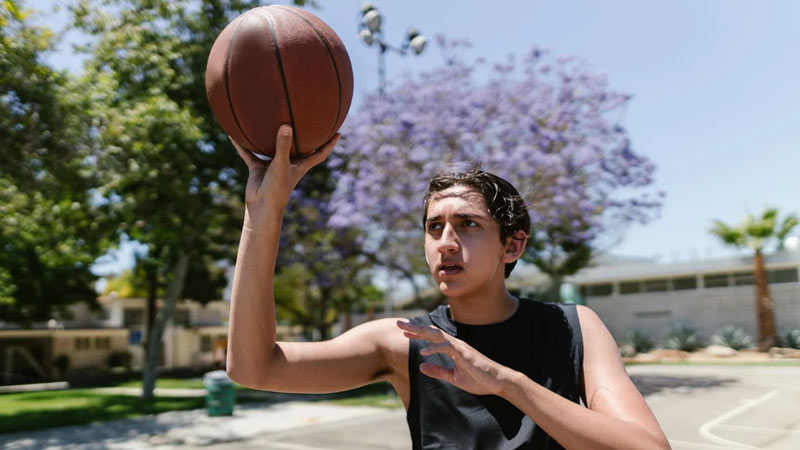
The one-hand push pass, similar to a chest pass, involves pushing the ball with one hand to achieve more power. This technique is useful when you need a quick and powerful pass to a teammate.
Extend your arm fully and use your wrist to generate the necessary force and direction, aiming for accuracy and speed.
Baseball Pass

Utilizing the baseball pass can quickly move the ball across long distances. Hold the ball with one hand like a baseball and throw it overhand. This pass is ideal for fast breaks and getting the ball to an open teammate down the court.
Practice throws to improve accuracy and to avoid turnovers during crucial moments.
Factors Influencing the Choice of Pass
Choosing the right pass during a basketball game can make or break a play. Several factors determine the type of pass a player should use in various situations. Understanding these can elevate your gameplay significantly.
Game Situation Analysis
Evaluating the game situation is crucial. If you’re in a fast-break scenario, consider a baseball pass to quickly advance the ball down the court. On the other hand, when you’re facing tight defense, a bounce pass can help you get the ball past defenders with their hands up.
According to García’s 2013 study, winning teams had more assists, highlighting the importance of selecting the appropriate pass based on the game situation.
Player Position and Movement
Your position and the receiver’s movement dictate the type of pass you should make. If your teammate is making a backdoor cut, a quick, precise one-hand push pass is often effective.
For static players or shooters, a chest pass ensures accuracy and speed. Sachanidi’s research in 2013 emphasized that passing efficiency could predict an athlete’s final performance, underlining the necessity of understanding positional dynamics.
Strategies to Enhance Passing Efficiency
Enhancing your passing efficiency can significantly impact your team’s overall performance. Key strategies include effective communication and perfecting your timing and precision.
Communication Among Team Members
Improve communication with your teammates. Use verbal cues, hand signals, or eye contact to indicate your intentions. For example, a quick nod or a shout can alert your teammate to cut towards the basket, creating better passing opportunities.
Effective communication ensures everyone is on the same page, reducing the risk of turnovers and missed connections.
Timing and Precision
Focus on timing your passes. A well-timed pass can mean the difference between a turnover and a scoring opportunity. Practice drills that simulate game situations to fine-tune your sense of timing. Precision is equally important.
Aim your passes at your teammate’s chest or target areas like their hands for quick shots or dribbles. High-intensity exercises can improve both aspects, helping you make accurate and timely passes even under pressure.
Drills to Improve Passing Skills
Enhancing your passing skills is crucial for basketball success. Incorporate these drills into your training routine to achieve better precision, speed, and coordination.
Partner Passing Drills
Practice with a teammate to simulate real-game scenarios. Start by standing about 10 feet apart and use chest passes to maintain a steady rhythm. Focus on accuracy by aiming for your partner’s chest or target spots like the right shoulder.
Also, include bounce passes where the ball hits the ground midway between you and your partner. As you improve, increase the speed and distance to challenge your accuracy under pressure.
Wall Passing Drills
Use a wall to practice solo and improve your reaction time. Stand about 6 feet from the wall and start with chest passes, aiming for a specific spot to ensure accuracy. As the ball rebounds, quickly catch and pass again.
This drill helps build muscle memory and sharpens your reflexes. Progress to overhead and bounce passes to work on different types of throws. Try to maintain a consistent speed to emulate real-game passing conditions.
Frequently Asked Questions
What are the basic types of basketball passes?
The basic types of basketball passes include the chest pass, bounce pass, and overhead pass. These passes are fundamental skills that help players effectively move the ball on the court.
How does a chest pass work?
A chest pass involves holding the ball with both hands at chest level and pushing it towards a teammate with a quick snapping motion of the arms and wrists. It’s a fast and direct pass commonly used to cover short distances.
When should you use a bounce pass?
A bounce pass is used when a defender is in the way. The ball is thrown to the floor so that it bounces up to the intended receiver, making it harder for defenders to intercept.
What is an alley-oop pass in basketball?
An alley-oop pass is a high, arcing throw to a teammate near the basket who catches the ball in mid-air and scores in a single motion. It’s often used for spectacular plays and requires precise timing and coordination.
What factors influence pass selection in basketball?
Pass selection in basketball depends on the game situation, player positions, defensive coverage, and the distance between players. Choosing the right type of pass can increase the likelihood of maintaining possession and creating scoring opportunities.
Conclusion
Mastering various types of basketball passes is crucial for gaining a strategic edge on the court. By understanding when to use specific passes and honing your passing skills through practice and effective communication, you can significantly enhance your team’s performance.
Incorporating drills that mimic real-game situations will sharpen your precision and speed, reducing turnovers and creating more scoring opportunities. The key to successful passing lies in timing, precision, and teamwork.
In this guide, we’ll explore the chest pass, bounce pass, overhead pass, and no-look pass, each of which serves a unique purpose and can disrupt even the most robust defenses when executed correctly.
Understanding these passes and knowing when to deploy them will elevate your gameplay and make you an invaluable asset to your team.

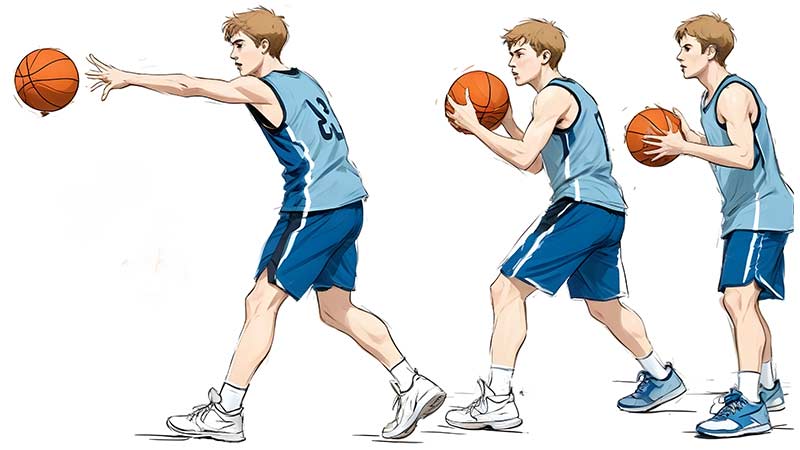



Buzz Williams